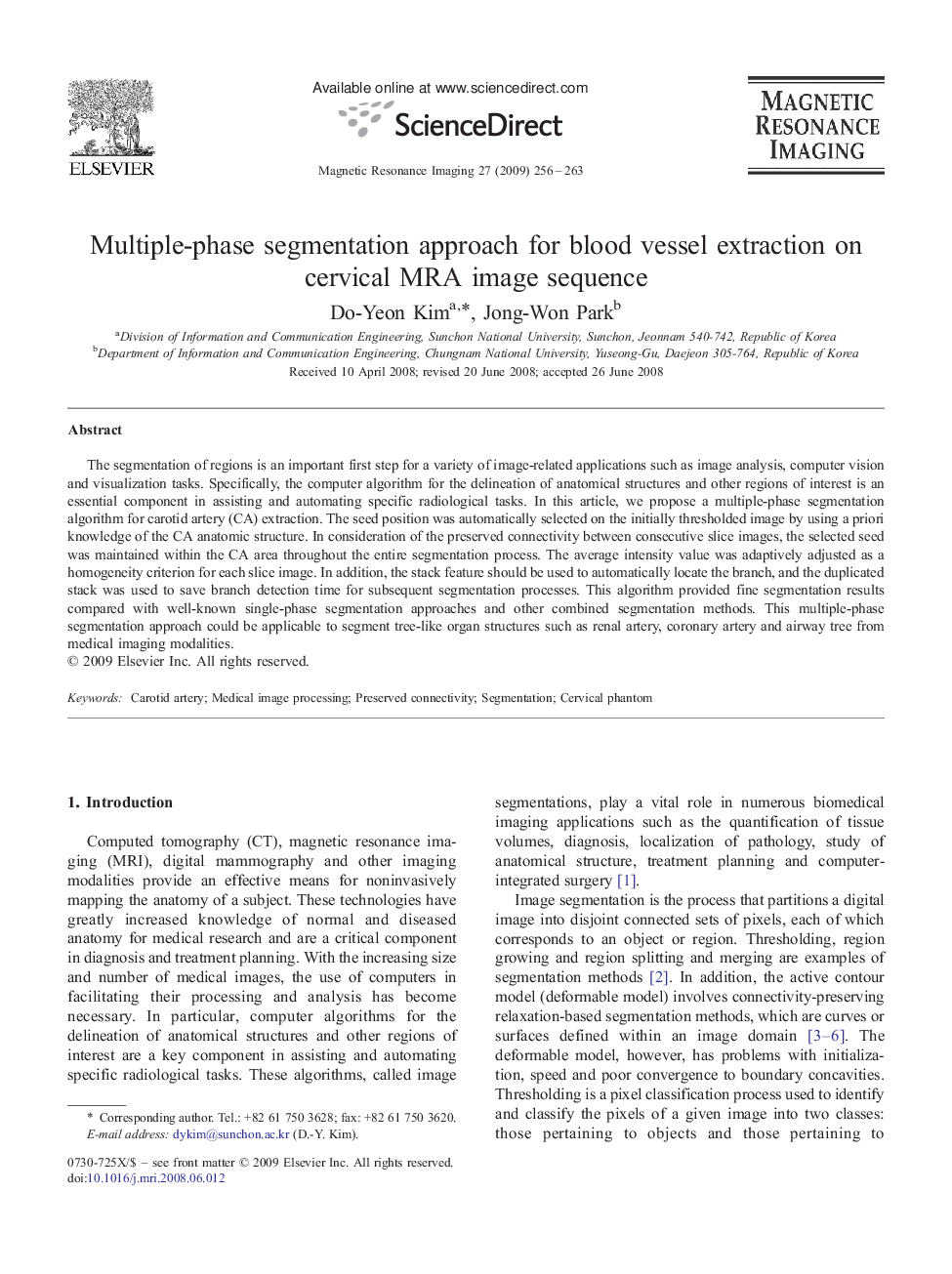| Article ID | Journal | Published Year | Pages | File Type |
|---|---|---|---|---|
| 1807323 | Magnetic Resonance Imaging | 2009 | 8 Pages |
The segmentation of regions is an important first step for a variety of image-related applications such as image analysis, computer vision and visualization tasks. Specifically, the computer algorithm for the delineation of anatomical structures and other regions of interest is an essential component in assisting and automating specific radiological tasks. In this article, we propose a multiple-phase segmentation algorithm for carotid artery (CA) extraction. The seed position was automatically selected on the initially thresholded image by using a priori knowledge of the CA anatomic structure. In consideration of the preserved connectivity between consecutive slice images, the selected seed was maintained within the CA area throughout the entire segmentation process. The average intensity value was adaptively adjusted as a homogeneity criterion for each slice image. In addition, the stack feature should be used to automatically locate the branch, and the duplicated stack was used to save branch detection time for subsequent segmentation processes. This algorithm provided fine segmentation results compared with well-known single-phase segmentation approaches and other combined segmentation methods. This multiple-phase segmentation approach could be applicable to segment tree-like organ structures such as renal artery, coronary artery and airway tree from medical imaging modalities.
